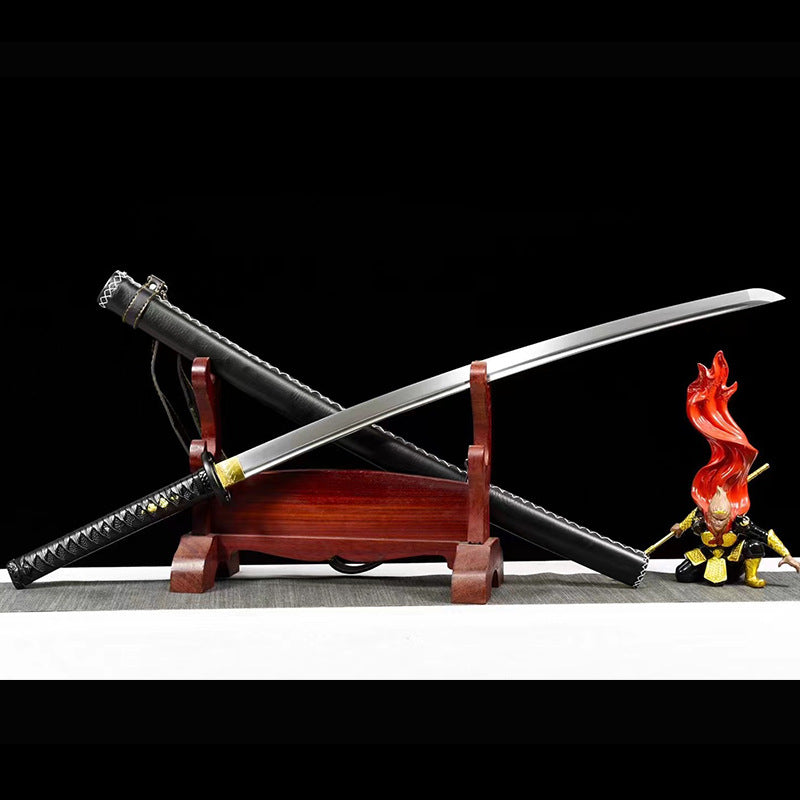
Different Types of Swords: From Historical Blades to Fantasy Icons
Swords have long been more than just weapons—they are symbols of power, honor, craftsmanship, and even storytelling. Across cultures and centuries, these blades have evolved in shape, purpose, and meaning, leaving an indelible mark on history and popular culture. Today, we’ll explore some fascinating types of swords, with a special focus on two that have become iconic in modern media: the MANGAKATANA and the broader category of ANIME SWORD.
Let’s start with a nod to history. Traditional swords are often defined by their cultural origins. For example, the Japanese katana, with its curved blade and single edge, is renowned for its precision and association with the samurai code of bushido. European medieval swords, like the longsword, were designed for both cutting and thrusting, reflecting the combat styles of knights in armor. Then there’s the Arabic scimitar, with its distinctive curve optimized for mounted combat, and the Chinese jian, a straight, double-edged blade symbolizing elegance and martial virtue. These historical swords are not just tools; they carry the stories of the societies that forged them.
But as storytelling has moved beyond history books to comic books and animated series, swords have taken on new forms—and that’s where MANGAKATANA comes into play. A portmanteau of “manga” (Japanese comics) and “katana,” the MANGAKATANA is a sword specifically crafted to fit the exaggerated, stylized world of manga. Unlike traditional katana, which adhere to strict historical proportions, MANGAKATANA often feature dramatic designs: longer blades, ornate hilts with vibrant colors, or even supernatural elements like glowing edges or the ability to channel energy. They are extensions of the characters who wield them, reflecting their personalities or powers. For instance, a hero’s MANGAKATANA might be sleek and sharp, symbolizing their focus and resolve, while a villain’s could be jagged and menacing, hinting at their chaotic nature. In manga, these swords aren’t just weapons—they’re visual storytelling devices that enhance the drama and excitement of the narrative.
Closely related to the MANGAKATANA is the ANIME SWORD—a term that encompasses all swords featured in anime (Japanese animation), whether they’re based on historical designs or purely fictional. Anime, with its dynamic visuals and epic storylines, has a way of making swords feel larger than life. Some anime swords are faithful to real-world counterparts, like the katana wielded by samurai characters in period pieces, which pay homage to Japan’s martial history. Others, however, are purely fantastical. Think of swords that can cut through dimensions, summon elemental forces, or even have a consciousness of their own. These anime swords often become as iconic as the characters themselves. For example, a sword that can only be wielded by a chosen hero, or one that holds a cursed power, adds layers of conflict and intrigue to the plot. What makes anime swords so compelling is their versatility—they can be symbols of tradition, tools of rebellion, or keys to unlocking ancient mysteries, all while looking visually stunning on screen.
Of course, MANGAKATANA and anime swords are just two branches of a vast family tree. There are also fantasy swords from Western literature and games, like Excalibur from Arthurian legend, which is steeped in magic and destiny. Then there are functional swords used in modern times, such as those for martial arts training or historical reenactments, which prioritize durability and accuracy to their historical models.
In the end, whether they’re historical artifacts, stylized manga creations, or fantastical anime weapons, swords continue to captivate us because they represent more than steel and craftsmanship. They represent the stories we tell—of heroism, struggle, tradition, and imagination. So the next time you see a sword, whether in a museum, a manga panel, or an anime scene, take a moment to appreciate not just its design, but the tales it carries.
